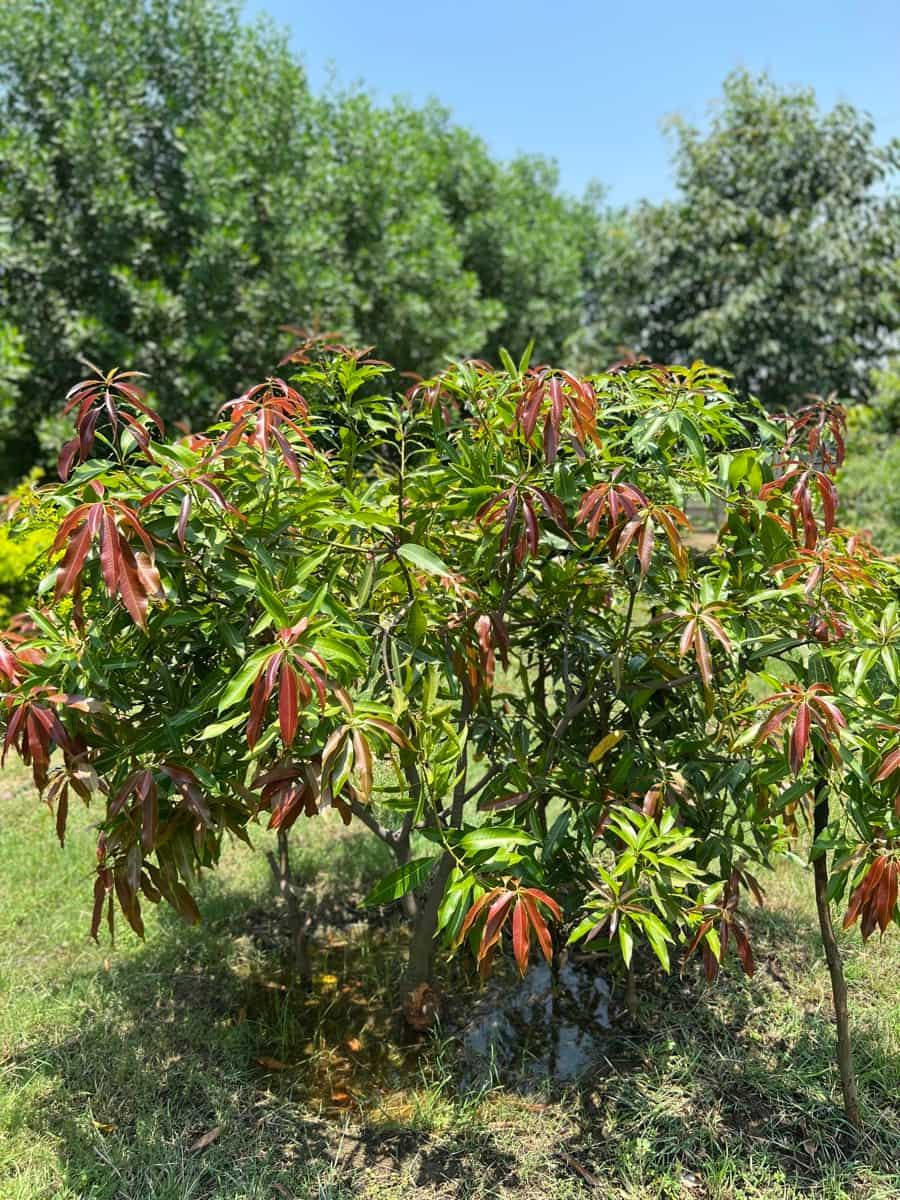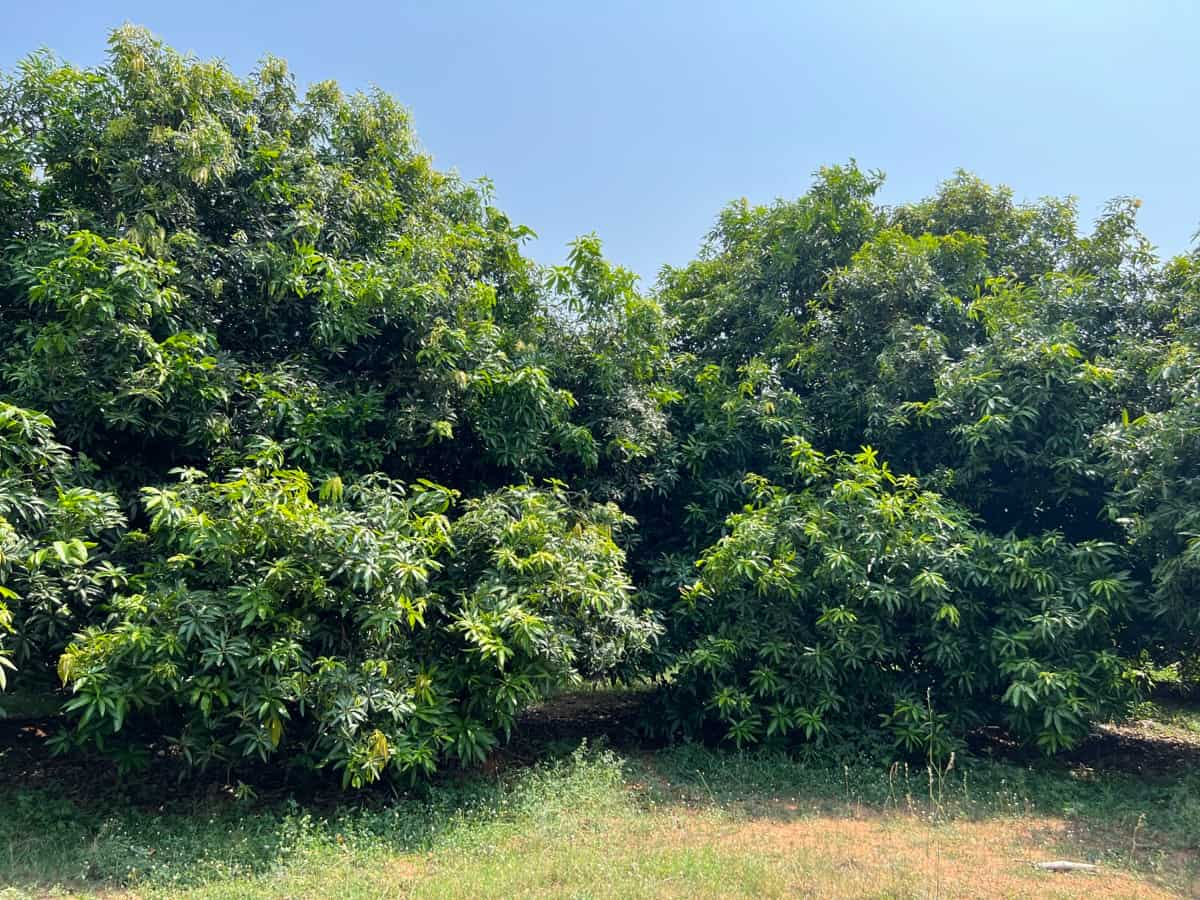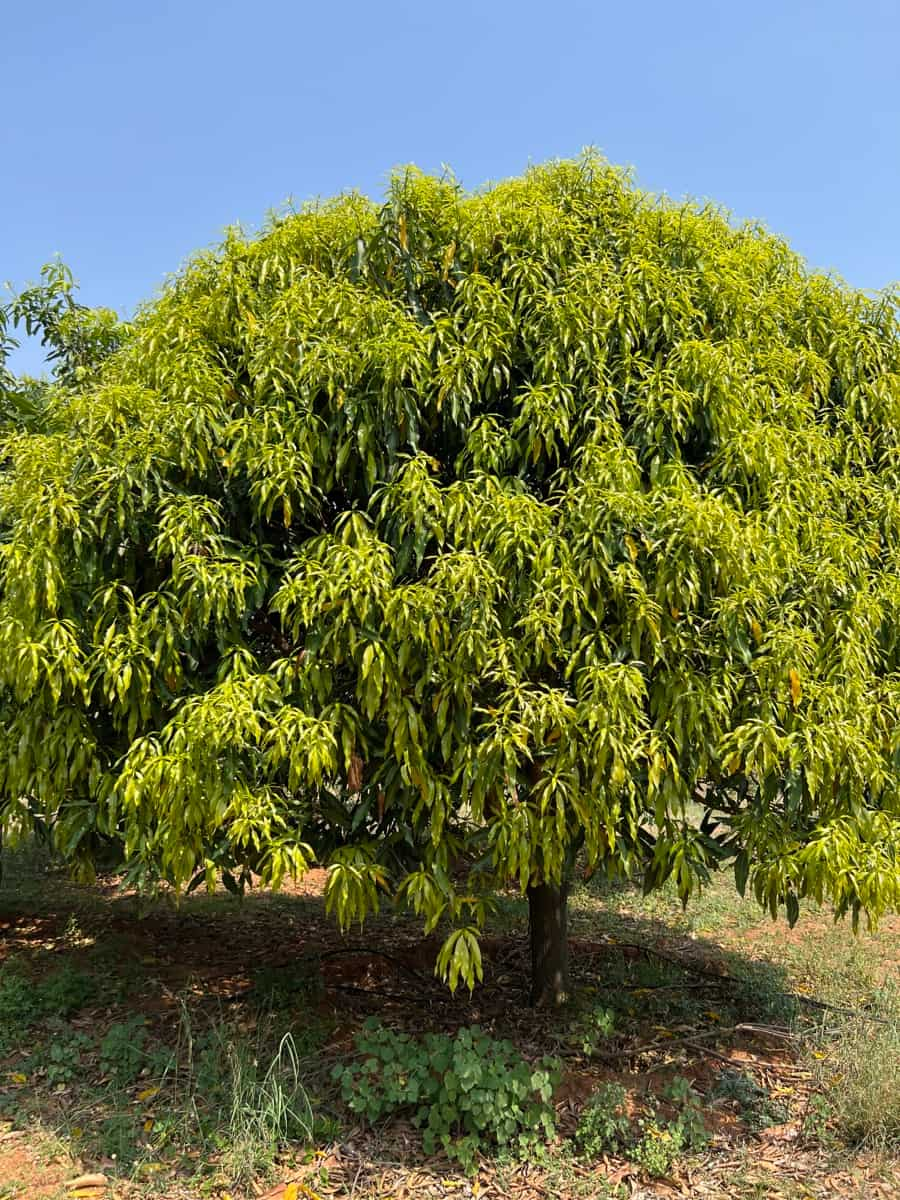Welcome to our blog post on Common Mango Tree Diseases! Mango trees, known for their delicious fruits, are susceptible to various diseases affecting their health and productivity. This article will explore the symptoms, spread, identification, treatment, control, and management of these diseases. Get ready to unravel the mysteries of mango tree diseases as we delve into the perplexing world of these ailments.

Common Mango Tree Diseases
Common Mango Diseases That Affect Mango Trees
- Anthracnose: This is the most important disease of mango in humid production areas. It is caused by species of the Colletotrichum genus, with Colletotrichum asianum being the most important species. Anthracnose can cause significant postharvest losses in mango fruits.
- Bacterial Black Spot (BBS): Also known as bacterial canker, this disease can be the most important mango disease in areas where other fungal diseases are well managed. It is caused by different groups of bacteria, such as Xanthomonas citri pv. mangiferaeindicae, X. axonopodis pv. Anacardii, and X. axonopodis pv. Spondiae.
- Stem-end Rots: These diseases are caused by various fungal pathogens, including Dothiorella dominicana, Dothiorella mangiferae, Lasiodiplodia theobromae, Phomopsis mangiferae, and Pestalotiopsis mangiferae. They can result in heavy losses during fruit storage.
- Alternaria Rot or Black Spot: Caused by Alternaria alternata, this disease is more prevalent in arid environments. It can affect both fruit and leaves.
- Black Mildew, Sooty Moulds, Sooty Blotch: These diseases are caused by various fungi. Meliola mangiferae is a common cause of black mildew, while sooty molds develop in the presence of insects that produce honeydew.
Other occasional fruit diseases include bacterial rot, blue mold, charcoal rot, Macrophoma rot, Mucor rot, Phyllosticta rot, Phytophthora rot, and Rhizopus rot. Foliar and floral diseases that can affect mango trees include algal leaf spots (red rust), apical necrosis caused by Pseudomonas syringae pv. syringae, black-banded disease caused by Rhinocladium corticola, grey leaf spot caused by Pestalotiopsis mangiferae, leaf blight caused by Macrophoma mangiferae, and malformation, which is one of the most destructive mango diseases.
Powdery Mildew Disease Damage on Mango Tree
Disease Symptoms: Powdery mildew is a common disease characterized by a white powdery fungal growth on leaves, stalks of panicles, flowers, and young mango fruits. It leads to dropping affected flowers and fruits, reducing crop load and fruit set. The fungus attacks young tissues of the inflorescence, leaves, and fruits, with young leaves more prominently affected. These patches can merge and turn purplish-brown.
Survival and Spread: The powdery mildew fungus survives in dormant buds during winter and produces spores when conditions are favorable in spring. These spores cause new infections, and secondary spread spores are produced cause new infections. Rains or mists and cooler nights during flowering create congenial conditions for spreading disease. Rains or mists favor the spread of powdery mildew with cooler nights during flowering.
Treatment, Maintenance, and Control Measures: Clean the Mango tree area. In addition to other effective fungicides, you can spray wettable sulfur or carbendazim fungicide. The first spray can be applied immediately after the flowers bloom, and the second spray can be applied 15 days later.
Anthracnose Disease Damage on Mango Tree
Disease Symptoms: Anthracnose disease commonly causes serious damage to young mango shoots, flowers, and fruits, including fruit rot during storage. It manifests as leaf spots, blossom blight, wither tip, twig blight, and fruit rot. Tender shoots and foliage are easily affected, leading to the dieback of young branches. Severe infections destroy the entire inflorescence and fruit drop.
Survival and Spread: The fungus causing anthracnose survives in dead twigs and other hosts, serving as a source of primary infection. High humidity, frequent rains, and temperatures between 24-32°C favor the developing of the disease.
Treatment, Maintenance, and Control Measures: sprinkle Pseudomonas fluorescens on flowering twigs every three weeks. You can also apply different fungicides. Mangoes can also be soaked in hot water for 15 minutes before storage. You can also soak the mangoes for 5 minutes in Benomyl solution (500ppm) or Thiobendazole (1000ppm).
In case you missed it: 10 Common Mango Tree Damaging Pests: Symptoms, Identification, Treatment, Control, and Management

Sooty Mold Disease of Mango
Disease Symptoms: Sooty mold is common in mango orchards where mealybugs, scale insects, and hoppers are not efficiently controlled. It appears as a black velvety coating on leaves, twigs, and sometimes the entire tree. The severity of infection depends on honeydew secretions by scale insects, providing a medium for fungal growth.
Survival and Spread: The severity of infection depends on honeydew secretions by scale insects, which serve as a medium for fungal growth. Transmission can occur through air-borne co-spores. High humidity and moist conditions favor the disease’s development.
Treatment, Maintenance, and Control Measures: Spray a systemic pesticide, such as monocrotophos or methyl demeton. This kills the insect. The fungus will not be able to survive without feeding. As a result, the fungus begins to die. Flour can also be used to clear the fungus’s black coating. In which 1 kilogram of flour is boiled in 5 liters of water. You can sprinkle over the plants by adding 15-20 liters of water.
Dieback Disease of Mango Tree
- Disease Symptoms: Dieback disease commonly presents symptoms such as drying of twigs from top to bottom, drying of leaves resembling fire scorch, internal browning in wood tissue, cracks on branches, and gum exudation. Graft union blight and death of nursery plants can also occur.
- Survival and Spread: The pathogens responsible for dieback survive in plant debris, acting as a source of primary inoculum. The disease is most common during October-November, and its development in high humidity and moist conditions.
- Treatment, Maintenance, and Control Measures: Carbendazim, Thiophanate Methyl (0.1%), or Chlorathalonil (0.2%) can be used.
Phoma Blight Disease of Mango Tree
- Disease Symptoms: Phoma blight disease commonly affects old leaves, causing angular, yellow to light brown lesions on the lamina of a mango leaf. These lesions enlarge, changing color to cinnamon, with dark margins and necrotic centers. Severe infections lead to the complete withering and defoliation of infected leaves.
- Survival and Spread: The pathogen causing Phoma blight is a seed-borne fungus. Inoculum present in seeds and plant debris contributes to primary infection. Rainy seasons create favorable conditions for disease development.
- Treatment, Maintenance, and Control Measures: Systemic insecticides like monocrotophos or methyl demeton can eliminate this issue. It kills insects. The fungus will starve. The fungus disappears. Flour can remove the black fungal coating. This boils 1 kg of flour in 5 liters of water. Sprinkle 15-20 liters of water on plants.
Red Rust Disease of Mango
- Disease Symptoms: Red rust, caused by an alga, results in rusty red spots on leaves, petioles, and bark of young twigs. These spots start as greenish-grey, turning reddish-brown, and can merge to form larger irregular spots. The disease is more common in closely planted orchards and reduces the host plant’s vitality.
- Survival and Spread: The pathogens reproduce and survive in spots on leaves, stems, and fallen plant debris. Frequent rains and warm weather create favorable conditions, while poor plant nutrition and stagnant air can predispose the host to infection.
- Treatment, maintenance, and Control Measures: Spray Bordeaux combination (0.6%) or copper oxychloride 0.25%, together with any other fungicide that contains this technology.
Root Rot & Damping Off Disease of Mango
- Disease Symptoms: Root rot and damping off caused sudden leaf dropping after seedling emergence. Circular to irregular water-soaked patches appear at or below ground level, eventually girdling the seedlings’ base.
- Survival and Spread: The disease is soil-borne, and the pathogen survives in orchard soils. Primary infection occurs through the soil; secondary infection can be through conidia dispersed by rain or wind. High humidity, soil moisture, cloudiness, and temperatures below 24°C favor infection and disease development.
- Treatment, maintenance, and Control Measures: Carbendazim, Thiophanate Methyl (0.1%), or Chlorathalonil (0.2%).
Mango Malformation Disease of Mango Tree
- Disease Symptoms: Mango malformation presents as vegetative malformation and floral malformation. Vegetative malformation causes abnormal growth and swollen seedlings with short internodes. Floral malformation transforms flower buds into vegetative buds, resulting in small leaves and stems resembling witches’ brooms.
- Survival and Spread: The disease primarily spreads through infected plant material, and the mango bud mite is associated with facilitating fungal infection. Moist weather conditions favor the disease’s development.
- Treatment, maintenance, and Control Measures: spray 100-200ppm NAA hormone. To prevent mold and eliminate unhealthy plants, spray Carbendazim (0.1%) or Captafol (0.2%).
Gummosis Disease of Mango Tree
- Disease Symptoms: Gummosis is characterized by the profuse oozing of gum on affected wood, trunk bark, and cracked branches. In severe cases, gum droplets trickle down the stem, and the tree dries up due to cracking, rotting, and girdling effects.
- Survival and Spread: The pathogen survives in diseased plant debris, and warm weather conditions favor its development.
In case you missed it: Mango Alternate Bearing and Clustering Disorders Management: Symptoms, Causes, Favorable Conditions, and Treatment

Bacterial Canker Disease of Mango
- Disease Symptoms: Bacterial canker is a common disease that affects the leaves, stems, twigs, branches, and fruits of mango. It causes water-soaked lesions that later develop into cankers. On leaves, yellow lesions with dark brown cankerous patches form. On fruits, dark brown to black cankerous spots can cover the entire fruit.
- Survival and Spread: The pathogen survives in lesions and diseased plant tissues. Spring seasons contribute to the development of the disease.
- Treatment, maintenance, and Control Measures: Remove and destroy unhealthy twigs. Use Copper oxychloride 0.25, Mancozeb 0.25%, or Bordeaux combination 1.0% for mango tree sprinkles.
- Postharvest Disease Symptoms of Mango: Postharvest diseases of mango include anthracnose (caused by Colletotrichum gloeosporioides), stem end rot (Lasiodiplodia theobromae), and Aspergillus rot. These diseases can affect mango fruits during storage under ambient conditions or even at low temperatures.
Conclusion
Common mango tree diseases include powdery mildew, anthracnose, dieback, phoma blight, bacterial canker, red rust, sooty mold, mango malformation, gummosis, root rot, scab, and postharvest diseases. Proper identification, timely treatment, and effective control measures are essential for disease management and maintaining healthy mango trees.
- Beneficial Insects in Pest Management
- Natural Solutions for Pest Control in Flower Gardens
- Types of Fungicides Used in Agriculture
- Common Issues in the Fruit Development Stage of Pomegranate Farming
- Fruit Development Issues in Papaya: Easy Solutions and Treatment
- Soil-Borne Diseases and How to Protect Your Plants
- Practices to Prevent Disease Spread in the Garden
- From Wilted to Thriving: How to Treat Root Rot Naturally in Houseplants
- Natural Remedies to Cure Brown Spots on Fig Tree Leaves
I am unable to respond in English desease name.